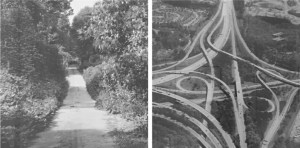I get to chat with a lot of LDHR folk. It’s fun. On a good day, we’re quite a thoughtful bunch, and I’ve noticed how much time many of us spend pondering growth – our personal and professional growth and that of the staff we connect with. A little while ago, I wrote a post about the 發展路徑 learning resource – a collection of self-directed learning modules that will hopefully spark your interest and meet your needs as an LDHR leader. We think it’s great stuff, but how do you actually use it?
Here are a few situations, from the thoughts that often swirl around in our heads, where Development Pathways might just be the answer,
“I just want to learn about it.”
You may want to address an area causing issues in your ministry. Or you know you’ve got your Position Focus Conversation coming up and want to have something new in your 個人發展計畫. You may simply be interested – having that healthy LDHR desire to expand your horizons. Whatever it is, the chances are there’s probably a module that can help with that.
“I’d like to give one of my team members a ‘stretch’ assignment.”
Maybe you’re on the other side of that Position Focus Conversation and looking for a Key Development Assignment for one of your team members. Perhaps you don’t work in LDHR and are unsure how to start figuring this out. Looking through the Development Pathways modules will likely prompt a few ideas you can mould and adapt to suit your team member’s situation.
“Let’s do something together.”
There is something special about learning together as a team to solve a problem, develop a new initiative, or refine an existing process. Using the basic outline and suggestions from a Pathways module and shaping it to your situation is a great way to act on a ministry situation that needs attention and grow team collaboration in the process. If you have regional responsibilities, it’s a great starting place for a cohort of your leaders to work together.
“I think they might be interested in LDHR.”
LDHR is such an excellent place for staff who are considering moving out of front-line ministry to take on wider leadership responsibilities. In order to help them and you discern if it would be a good move, why not give them an LDHR assignment from one of the modules to see how they get on? It can give them a taste of LDHR and help them understand the context, and it gives you an opportunity to evaluate their potential and fit. Even if you both conclude LDHR is not for them, you’ve probably solved an issue, and they have a greater understanding of LDHR, which is always a win for leaders in the ministry.
“I don’t really know what that is.”
Your secret is safe with us. You’ve heard people talk about “Action Learning,” but you’d be hard-pressed if someone asked you about it. A good number of our modules act as a “cheat sheet” – you can look it up, find out what it is and what it looks like in a ministry context, and then see where it goes from there. Who knows, it might just be the missing piece in LDHR that you’ve been looking for.
As I said, we’re a thoughtful bunch, so I’m sure these ideas will springboard into other, more creative ideas, but it’s a start. Whatever your need right now, have a look around and see where it takes you!










在〈Five Ways to Use Development Pathways〉中有 2 則留言
Very helpful and practical post, Mr. Cheese. I like that the modules are more “do-on-your-own research”. That is generally how I like to learn. These modules give a person a bit of a head start on the process of learning.
Thanks Steve – me too. the idea of someone guiding my learning by pointing me in the right direction but not giving me the answers sparks my creativity. Appreciate the feedback!